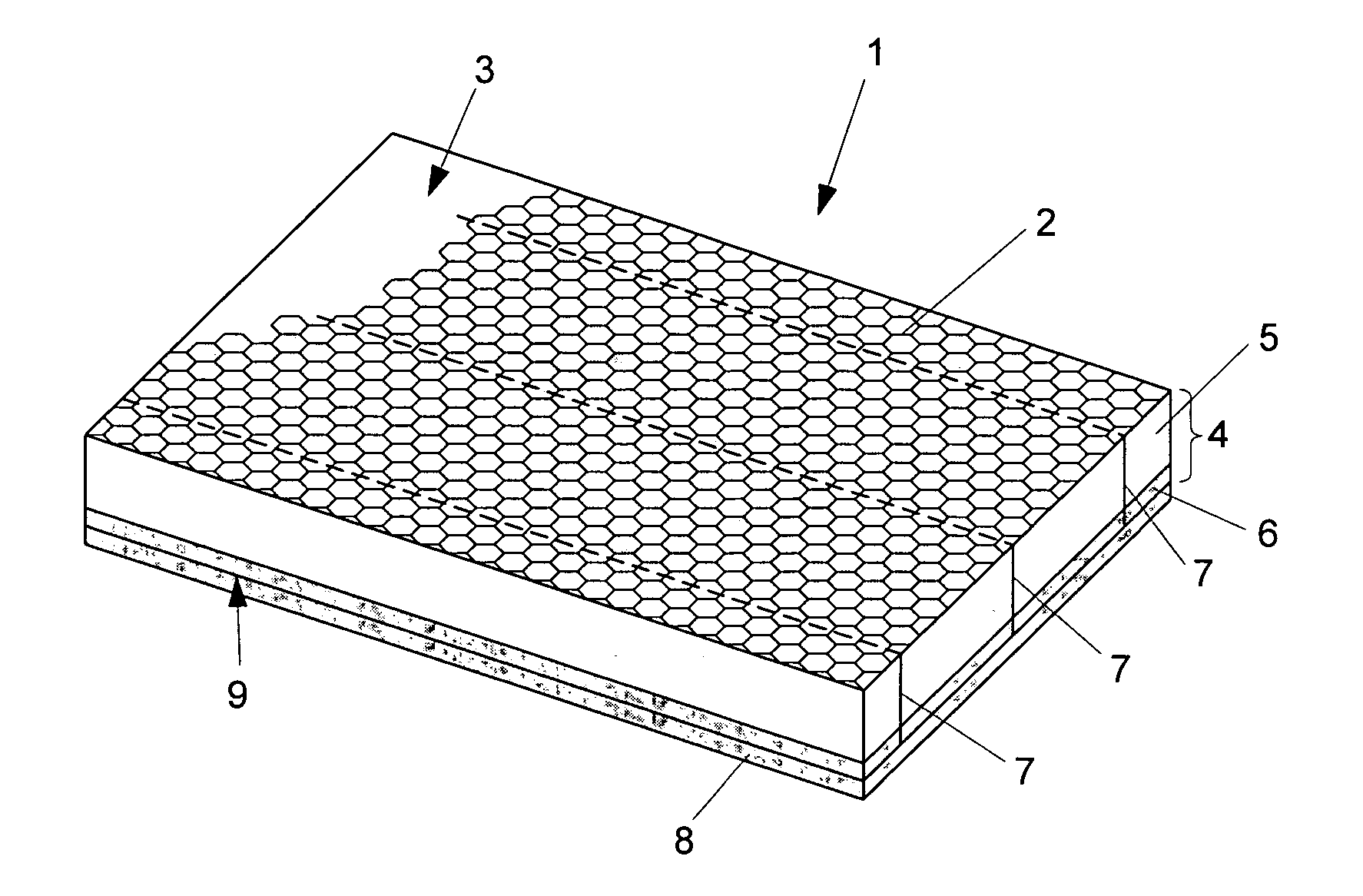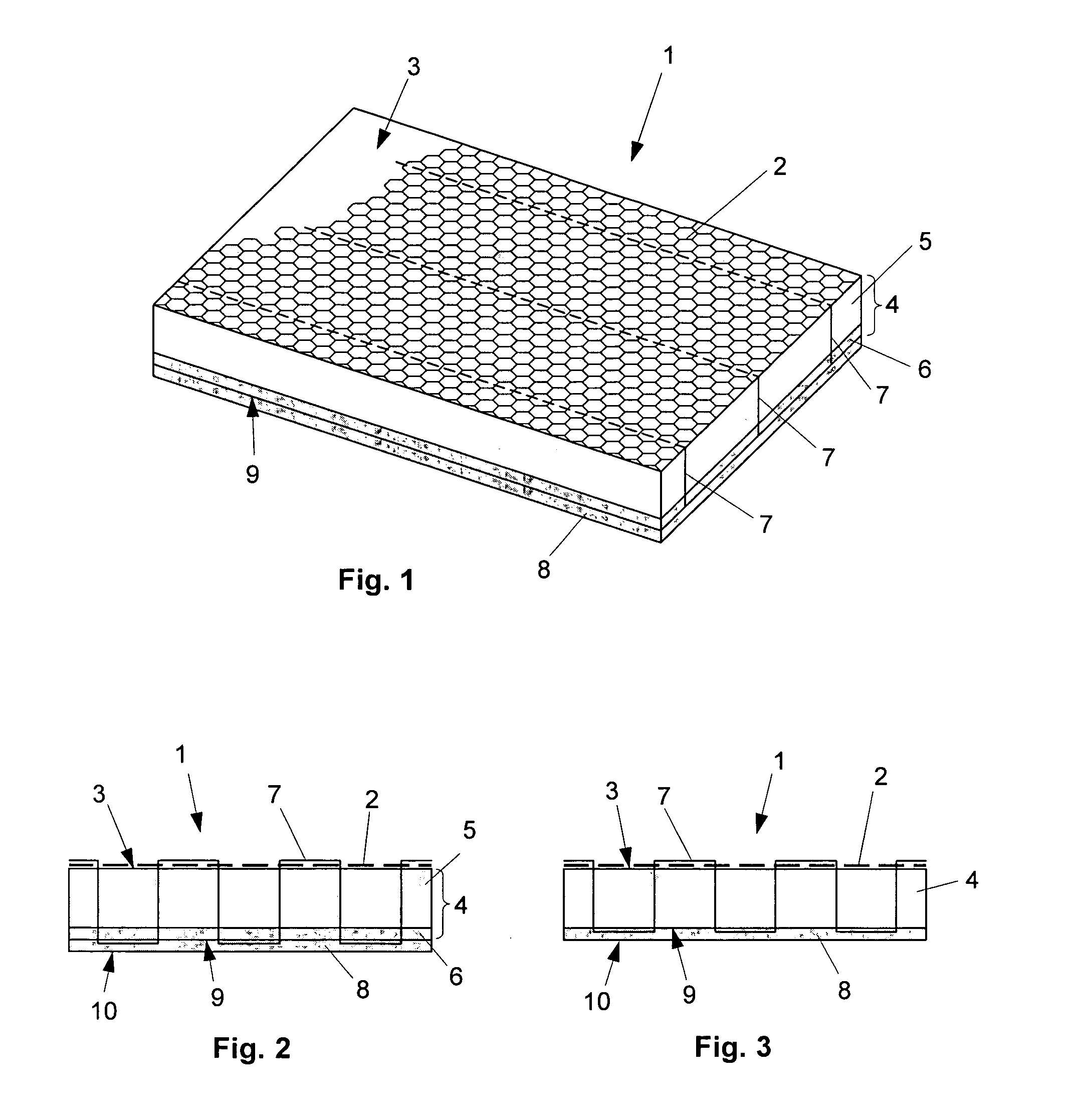Flexible insulating product
a flexible, insulating technology, applied in heat-proofing, transportation and packaging, other domestic objects, etc., to achieve the effect of not affecting negatively the fire properties
- Summary
- Abstract
- Description
- Claims
- Application Information
AI Technical Summary
Benefits of technology
Problems solved by technology
Method used
Image
Examples
Embodiment Construction
[0038]FIG. 1 shows a first embodiment of a flexible insulating product 1 according to the invention. The product 1 is a so-called wired mat, since it is provided with a flexible metal wire mesh 2 on the first side 3 of a flexible insulating core layer 4. In this first embodiment, the insulating core layer 4 comprises two layers, namely a first core layer 5 comprising mineral wool and a second core layer 6 comprising a flexible aerogel matrix composite, preferably comprising aerogel reinforced with mineral fibres. The first and second core layers 5, 6 are interconnected to the wire mesh 2 by means of a plurality of metal threads 7 that are stitched through the wire mesh 2 and the first and second core layer 5, 6. A flexible insulating cover layer 8 is secured to the second side 9 of the insulating core layer 4, i.e. on the bottom side of the second core layer 6, by means of an inorganic adhesive that adheres well to the second core layer 6 and the insulating cover layer 8, respective...
PUM
| Property | Measurement | Unit |
|---|---|---|
| aaaaa | aaaaa |
Abstract
Description
Claims
Application Information
 Login to View More
Login to View More - R&D
- Intellectual Property
- Life Sciences
- Materials
- Tech Scout
- Unparalleled Data Quality
- Higher Quality Content
- 60% Fewer Hallucinations
Browse by: Latest US Patents, China's latest patents, Technical Efficacy Thesaurus, Application Domain, Technology Topic, Popular Technical Reports.
© 2025 PatSnap. All rights reserved.Legal|Privacy policy|Modern Slavery Act Transparency Statement|Sitemap|About US| Contact US: help@patsnap.com


